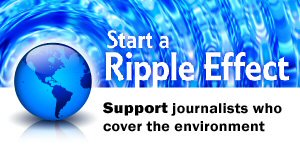SEJournal Online is the digital news magazine of the Society of Environmental Journalists. Learn more about SEJournal Online, including submission, subscription and advertising information.
 |
 |
| Among the datasets available through a Centers for Disease Control and Prevention portal is one from the National Biomonitoring Program, which assesses the exposure of the U.S. population to environmental chemicals and toxic substances. Photo: CDC website. |
Reporter’s Toolbox: CDC Data Offer Multiplicity of Starting Points for Environmental Health Stories
By Joseph A. Davis
Environmental health data can answer many questions — especially if you zoom out before zooming in. And one of the broadest purviews is that of the Centers for Disease Control and Prevention, or CDC. Yet it’s often overlooked by journalists covering other agencies.
We have written about CDC data before, but with a narrower focus, like our recent look at asthma data. But environmental journalists should also know that the CDC is a great source of data with a far wider scope, helpful when it comes to seeing national trends.
The CDC has a data portal that can point you to numbers on many different environmental topics. Moreover, it has search engines that can help you find what you want. In fact, it operates a multistate environmental public health tracking network,
For this Toolbox, we’re not going to point you to a single database to crunch — but rather wave our arms and holler for attention to the big data world that CDC offers. Get out there.
Where the data come from
With the data coming from the CDC, that alone offers much assurance about its quality, because the CDC cares about accuracy. Organizationally, much of it comes from the CDC’s National Center for Environmental Health. But it’s important to understand where the CDC gets its data from.
The CDC collects data mainly in two ways:
through direct surveys and from the vast network
of state and local public health agencies.
The CDC is mandated by law to do public health surveillance. So it collects data mainly in two ways. First, it conducts direct surveys itself, using standard sampling techniques. Second, it collects data from the vast network of state and local public health (and other) agencies.
But the strength of state and local agencies varies a lot — as do their problems (including budget) and their willingness to collaborate on national projects. So participation by those agencies is partial and that partly limits what conclusions can be drawn from incomplete data.
If your interest is mainly in state or local issues, start with state and local agencies. But if you want a national picture, the CDC is a good bet.
Using the data smartly
We’ve said it before and we’ll say it again: As always, ground-truth data whenever you can and do the shoe-leather reporting that gives it meaning and life.
For this Toolbox, we just want to give journalists a kind of survey-of-surveys, or a list of resources, rather than a single dataset. Here are some places at the CDC to start:
- Environmental Public Health Tracking Network: The online locus of much of the data, from many sources, with many tools and dashboards for using it.
- Tracking Dashboards: Among them are dashboards on environmental justice, heat and health, melanoma and radiation.
- Data Explorer: A good all-purpose query engine for this world of data.
- National Center for Environmental Health: This topic list may help guide you to areas of your interest.
- Childhood Lead Poisoning Data: The CDC’s surveillance of lead poisoning is especially robust.
- Human Exposure to Environmental Chemicals: This covers a range of chemicals of environmental concern.
- Foodborne Illness: Environmental forces are often at the bottom of foodborne illness outbreaks.
- Safe Water: Goes beyond standard coverage of sewage and drinking water treatment to include things like private wells and Legionnaires’ disease.
Joseph A. Davis is a freelance writer/editor in Washington, D.C. who has been writing about the environment since 1976. He writes SEJournal Online's TipSheet, Reporter's Toolbox and Issue Backgrounder, and curates SEJ's weekday news headlines service EJToday and @EJTodayNews. Davis also directs SEJ's Freedom of Information Project and writes the WatchDog opinion column.
* From the weekly news magazine SEJournal Online, Vol. 8, No. 35. Content from each new issue of SEJournal Online is available to the public via the SEJournal Online main page. Subscribe to the e-newsletter here. And see past issues of the SEJournal archived here.












 Advertisement
Advertisement 



